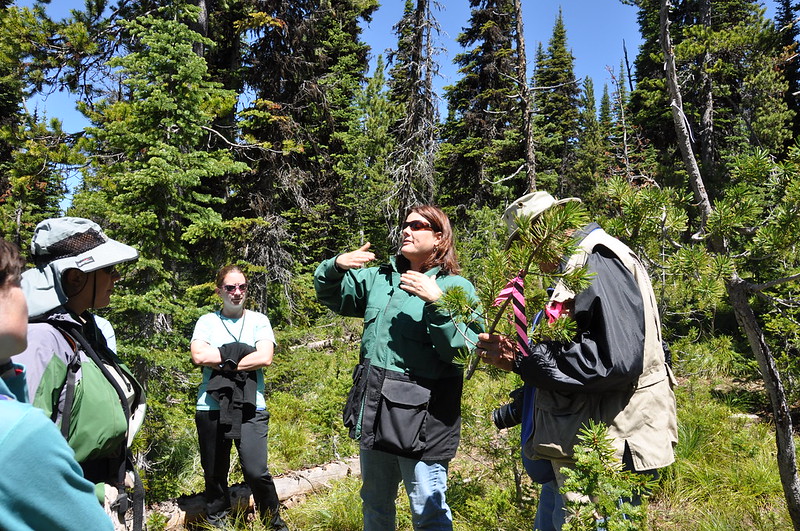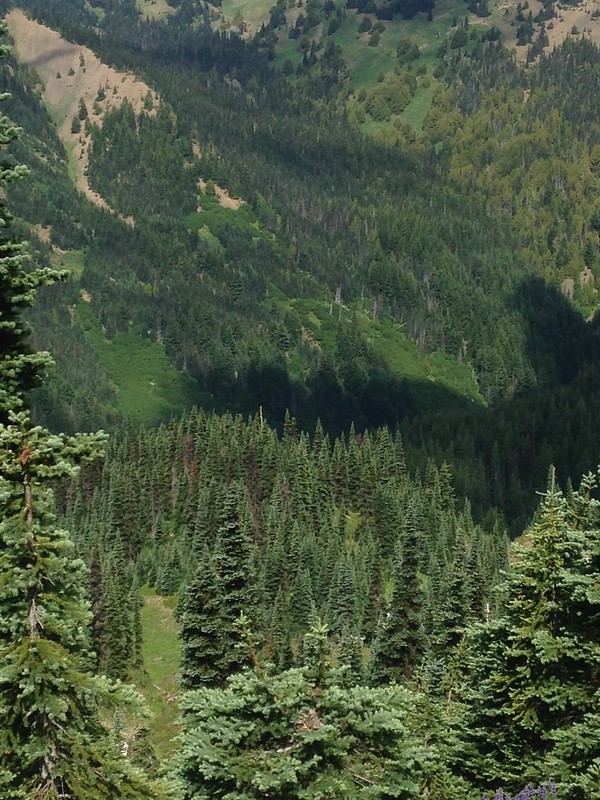Trees

Trees are the highest form of plant life on earth.
They are living organisms. Like us, they are also made of cells. An interesting sight is the image of a piece of leaf or needle from a tree under a microscope. Then you can see what their lives look like in magnification.
A tree is a term that can have different definitions. Generally, trees include plants that produce a trunk that their branches and leaves lift to a certain height above the ground on which they grow.
There are deciduous and coniferous trees (the leaves of which are in the form of needles). Another division distinguishes trees whose leaves (or needles) are evergreen, i.e. they fall off after a few years, and those that shed their leaves when autumn or dry season comes (in warmer climates).
A tree consists of a crown, a trunk and a root system, i.e. roots. The crown of the tree consists of leaves and branches that lift them up to the light.
This division of the structure of these plants allows you to distinguish parts in their construction that perform various important functions in their life.
Leaves grow on branches, usually their role is crucial for the tree, thanks to them the tree can absorb light in the process of photosynthesis, which contains energy from the sun.
This energy is stored in the leaves in the form of certain chemicals that the leaves make up and transported down the tree to nourish the rest of the tree.
Thanks to this energy, the tree lives and manages the processes that take place in it. More precisely, thanks to it, the leaves, branches, trunk and roots of the tree grow and function.
Leaves towards the light, lift branches.
The branches are also important because through them, from the leaves, further through the trunk, this energy is transported to the roots (energy converted in the leaves into certain chemical compounds mentioned earlier).
The whole tree needs it.
In trees, these substances are sent down to nourish them. The tree sends them in a sip, that is, a specific layer of the tree. This layer in the tree is just below the bark of the tree. It covers the branches, trunk and roots, it is a living layer and relatively thin. This layer of bast may resemble the "skin" that covers the tree, this layer is additionally covered with bark for protection.
However, leaves need water, mineral salts and other nutrients to absorb this energy in the process of photosynthesis that takes place in them. All this comes to them from the soil in which the tree grows or is produced in the tree.
The necessary ingredients for photosynthesis and other processes are transported from the roots, through the wood in the trunk, then through the wood in the branches to the leaves.
This is a difficult task because some trees are 20 m, 50 m and even 100 m high.
It is possible. First, the roots of the tree suck water with mineral salts from the soil, this is due to osmotic pressure (these are very strong forces).
The roots of the tree then pump this water into the trunk.
Then it works like a syringe. The leaves of the tree suck the water taken up by the roots and the mineral salts dissolved in it up the tree.
The force needed is generated by the evaporation of water from the leaves or needles, this force allows water and dissolved mineral salts to flow further up through the wood from the roots, through the wood in the tree trunk and branches, up the tree to the leaves.
This is how they reach the leaves, the tree can then, having the necessary ingredients, absorb the solar energy it needs to live.
The amount of water evaporated by the leaves depends on the tree species and the local conditions where it grows. Norway maple on a hot day can evaporate even a tub of water, that's a lot. There are also special tree species that can evaporate up to 1000 liters of water through their leaves in one day.
This is how the tree acts as a natural air-conditioner, increases air humidity and produces oxygen in the process of photosynthesis.
This description is a great simplification of the tree functioning processes, it is a very complex mechanism that is still at the stage of learning by science.
What is hidden exactly under the bark.
Beneath the bark that covers the trunk and branches of a tree is the phloem, the living layer that the tree uses to distribute substances formed in the leaves down the tree.
Under the phloem layer is the cambium layer, which is a very thin living and very important layer. The cambium builds up the tree by creating two types of cells. On the surface of this layer, where it borders the phloem, it creates new phloem cells, thus creating the phloem layer in the tree. Underneath the cambium layer, where the cambium borders the wood that fills the inside of the tree, it creates new wood cells.
This is how the cambium layer forms the wood in the tree.
The whole process of growing new wood in a tree takes place practically just below the bark and under a thin layer of bast and an even thinner layer of cambium that creates new wood.
It is unusual how the layer of cambium, only a dozen or so millimeters thick, in a tree, located almost under the bark, builds trees, sometimes of enormous size, with very thick trunks and tall ones, which can live up to hundreds of years.

There are over 60,000 species of trees, they occur in different places depending on climatic conditions and soils.
Where there are larger clusters of trees, for example in forests, one or many species of trees may dominate, creating mixed forests. The closer to the equator, the better conditions for trees to grow, provided that there is access to water.
Trees have different properties, which is why they affect their surroundings and us people differently, it depends on the type of tree and its growth conditions in a given place.
Trees have played an important role in our lives for centuries.
They served us as shelter, the wood was used to make tools, build houses. Trees continue to perform these functions in our lives. Fruits from edible tree species are probably important to most of the people around the world.
Despite the fact that we are in the 21st century, wood and products derived from it are still important in the economy. The most modern countries also use them in the greatest amount.

source of information : wikipedia.org
See more information :
